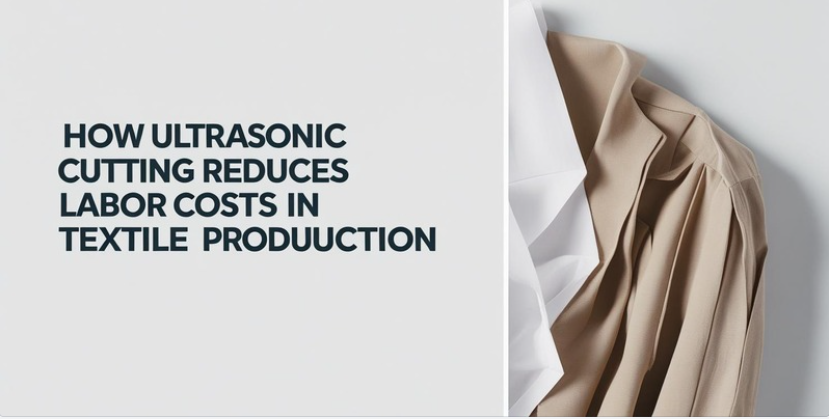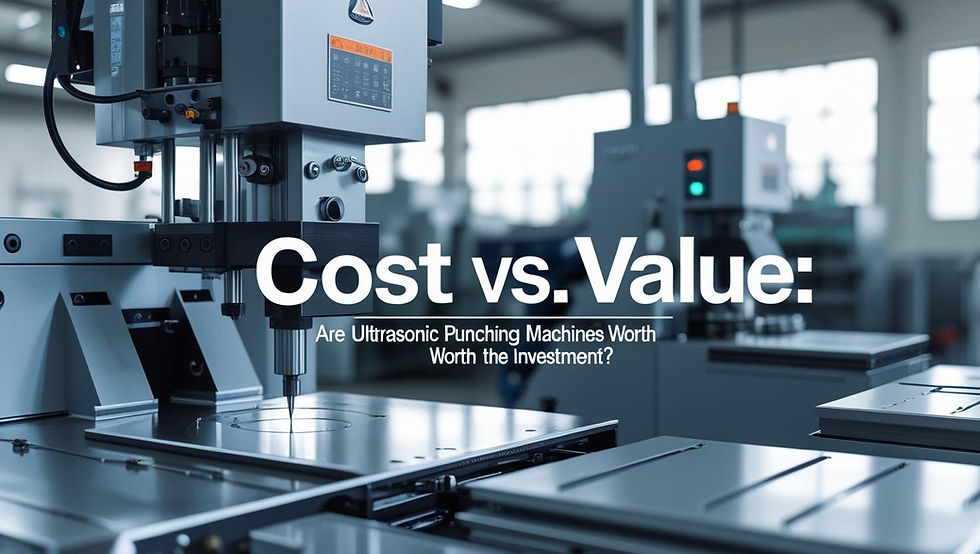How Ultrasonic Cutting Reduces Labor Costs in Textile Production
- ztzgsteeltech
- Aug 13
- 4 min read

In today’s highly competitive textile industry, manufacturers are under constant pressure to reduce operational expenses while maintaining product quality and meeting tight deadlines. One of the most effective solutions that has emerged in recent years is ultrasonic cloth cutting technology.
By replacing or complementing traditional cutting methods, ultrasonic cutting systems can significantly reduce labor costs while improving efficiency, precision, and safety. This makes them a valuable investment for textile manufacturers, garment producers, and industrial fabric processors.
Understanding Ultrasonic Cloth Cutting Technology
Ultrasonic cutting uses high-frequency sound waves to generate rapid vibrations in a cutting blade or horn. These vibrations create frictional heat at a microscopic level, allowing fabrics to be cut and sealed simultaneously without excessive pressure.
This process is particularly effective for synthetic fabrics, blends, and materials prone to fraying. It is widely adopted in industries producing garments, upholstery, technical textiles, sportswear, and even medical fabrics.
The Challenge of Labor Costs in Textile Production
Labor costs in textile manufacturing are not limited to wages alone. They also include:
Training expenses for skilled cutting operators
Time lost due to manual handling and adjustments
Rework costs caused by errors or imprecise cuts
Overtime pay during peak production seasons
Workplace injuries that may lead to compensation and downtime
Traditional cutting methods, such as manual shears, rotary cutters, or mechanical blade systems—often require more manpower, slower processing, and repeated quality checks. Ultrasonic cutting addresses many of these issues directly.
Ways Ultrasonic Cutting Reduces Labor Costs
1. Minimizing the Need for Skilled Manual Cutting
Traditional cloth cutting often demands experienced operators to ensure accuracy, especially with complex patterns or delicate materials. Ultrasonic cutting, on the other hand, offers automated precision that reduces the reliance on highly skilled manual cutters.
This means manufacturers can train workers faster, use less experienced operators without sacrificing quality, and allocate skilled labor to higher-value tasks.
2. Faster Production Speeds
Ultrasonic machines can operate at high speeds without compromising accuracy, allowing more fabric to be processed in less time. This reduces the total number of labor hours needed for each production run.
When combined with automated feeding systems, ultrasonic cutters can run continuously with minimal operator supervision, further reducing the need for multiple workers per cutting station.
3. Elimination of Post-Cutting Finishing Work
One of the major labor-saving benefits of ultrasonic cutting is its ability to cut and seal edges simultaneously. This prevents fraying, which is common in traditional cutting methods, and eliminates the need for additional edge finishing work such as hemming or heat sealing.
By removing these extra steps, factories save hours of manual labor per batch, especially in large-scale garment or upholstery production.
4. Reducing Rework and Material Waste
Human errors in manual cutting can result in costly rework and wasted fabric. Ultrasonic cutting provides consistent, repeatable accuracy, drastically lowering error rates.
With fewer defective pieces to correct or discard, manufacturers save not only on material costs but also on the labor hours required for re-cutting and adjustments.
5. Lower Maintenance and Downtime
Mechanical cutting tools require frequent blade sharpening, adjustments, and replacements. This not only consumes maintenance labor but also interrupts production.
Ultrasonic cutters have less wear and tear because the cutting action comes from vibration rather than constant mechanical friction. This means less downtime for repairs and fewer labor hours spent on maintenance.
6. Improved Safety Reducing Injury-Related Costs
Manual cutting tools can lead to repetitive strain injuries or accidents, especially in high-speed operations. Workplace injuries can result in compensation claims, reduced workforce availability, and the need for temporary labor replacements.
Ultrasonic cutters are safer to operate due to lower cutting force requirements and automated feeding mechanisms, reducing the likelihood of accidents and the costs associated with them.
Real-World Example: Labor Savings in Large-Scale Operations
Imagine a textile manufacturer producing 10,000 pieces of synthetic sportswear per week.
Traditional Cutting:
Requires 5 operators
Average of 8 hours per day
Post-cut edge sealing adds 2 more operators
With Ultrasonic Cutting:
Only 3 operators needed for the same output
No separate edge sealing step required
Downtime reduced due to less maintenance
This translates into hundreds of labor hours saved per month, significantly reducing payroll expenses while increasing output.
Feature Comparison: Ultrasonic vs. Traditional Cutting in Labor Efficiency
Feature | Ultrasonic Cutting | Traditional Cutting |
Operator Skill Requirement | Low to moderate | High |
Post-Cut Finishing Labor | Not required | Often required |
Cutting Speed | High | Moderate |
Error Rate | Very low | Moderate to high |
Maintenance Labor | Minimal | Frequent blade servicing |
Safety Risk | Low | Moderate to high |
Long-Term ROI from Labor Savings
While the initial investment in ultrasonic cutting machines is higher than traditional equipment, the long-term savings in labor costs quickly justify the expense.
By reducing the number of operators required, cutting post-processing steps, and minimizing rework, companies often see a return on investment within 12–18 months, especially in high-volume production settings.
Other Benefits That Indirectly Save Labor Costs
Beyond direct payroll savings, ultrasonic cutting also offers secondary cost benefits:
Shorter production lead times allow for more orders without increasing staff.
Higher product consistency reduces customer complaints and returns, saving on after-sales service labor.
Easier integration with automated production lines decreases manual intervention.
Final Thoughts
In the textile manufacturing industry, controlling labor costs without sacrificing quality is a constant challenge. China ultrasonic cloth cutting machine address this challenge head-on by streamlining the cutting process, reducing manual intervention, and eliminating extra finishing steps.
For B2B buyers, the shift to ultrasonic cutting is not just about adopting a new technology, it’s about strategic cost management. By investing in ultrasonic systems, textile producers can achieve faster turnaround times, maintain consistent quality, and operate with leaner staffing requirements, all of which lead to a healthier bottom line.



Comments